In early 2007 the first exploratory mission was launched up the
Lomami. One very large dug-out took off from Kisangani full of
barrels of fuel, bags of rice, bags of beans, packs of salt fish, cans
of sardines , a bottle or two of Johny Walker-red and a crew of men.
All of these men had had experience in animal inventories in Congo’s
forests, but none of them had worked here, in the center of the Congo.

The roadless, unexplored forest between the Tshuapa,
Lomami and Lualaba Rivers was clear on satellite images.
I was in the west, in Kinshasa covering on the administrative/
diplomatic aspects of the trip. John was in the east, finishing
up an animal inventory in the Ituri forest. Ashley, who had
earlier worked with John on surveys in the Salonga Forest
accepted the rather daunting task of leading the first mission
into a truly unknown forest.
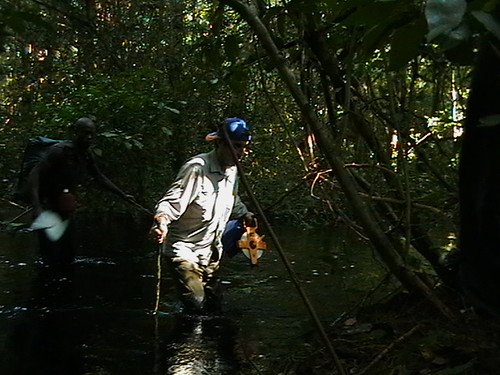
Ashley on one of the first exploratory circuits.
Just a little damp.
In two months Ashley made it all the way to the first falls on
the Lomami River, nearly 1000 river km (620 miles) south
along the Lomami River. His teams had made survey circuits
into the forest on the east and west bank, often trekking with
only sardines, beans and fufu as rations for two weeks or more.
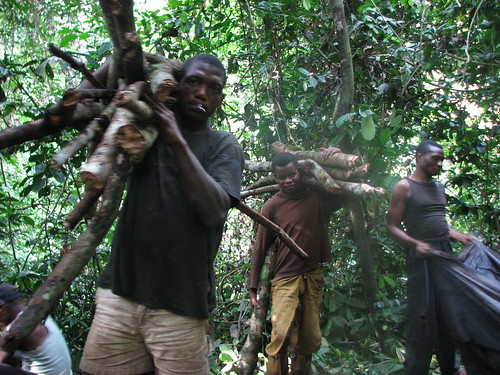
Setting camp at night.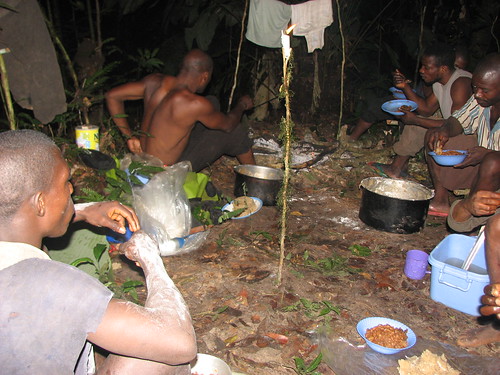
The beans often were not adequately cooked until well
after camp was set.
By the second mission John was full time on the TL2 challenge
and I expanded diplomatic efforts to Kisangani.
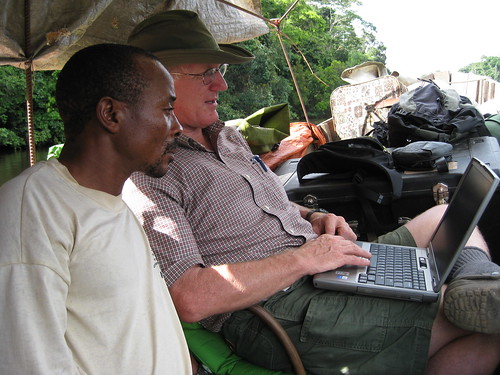
In the dugout, John looks over results of a circuit with team
leader, Maurice.
The diplomacy became far more complicated than anticipated as
we were accused by some of being diamond prospectors and by
others of being mercenary/rebels. Why else would anyone
venture up the Lomami River?
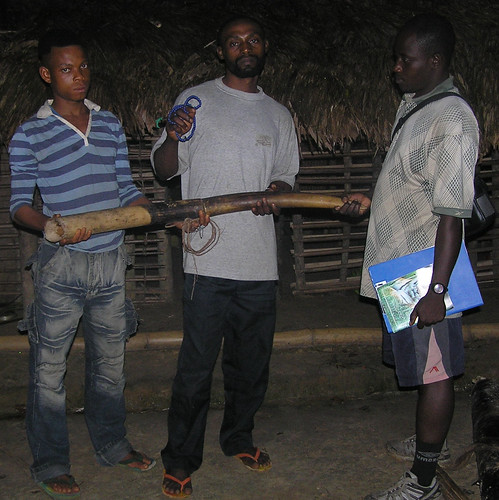
Major Ranger was a Maimai rebel up the Lomami River with
whom we had to negotiate our terms of co-existance carefully.
He is center, Maga of TL2 on the right. He was an elephant
poacher and killer of bonobo, but finally jailed for large-scale rape.
By early in 2008 we had two field bases, one at Obenge and one at Katopa .
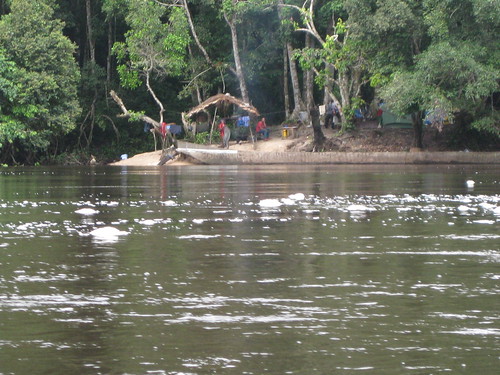
Our large dugout, docked in front of our camp Katopa at
the south end of the TL2 area on the Lomami River.
The original area slated for inventory covered 50,000 km²
(19,300 mi²). Our first estimation of important forest had
included all that seemed unbroken – virgin – on satellite
maps. On the ground, however, it rapidly became clear that
much of this forest was empty. Although there were no
settlements, the forest had been hunted to exhaustion,
all large mammals were gone including totally protected,
bonobo, okapi and forest elephant. Hunting camps and
signs of hunting were everywhere. Bushmeat merchants
were along every path and road hauling their wares to market.

The beginning of the bushmeat chain. Black mangabey
mother, baby and 12-gauge that killed them.
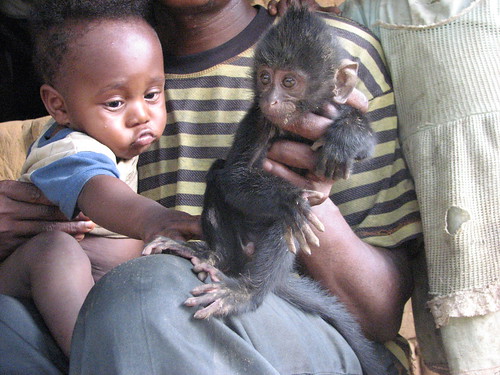
This baby black mangabey survived the killing of its
Mom to become a local pet until it dies.
Source and Finale
No comments:
Post a Comment